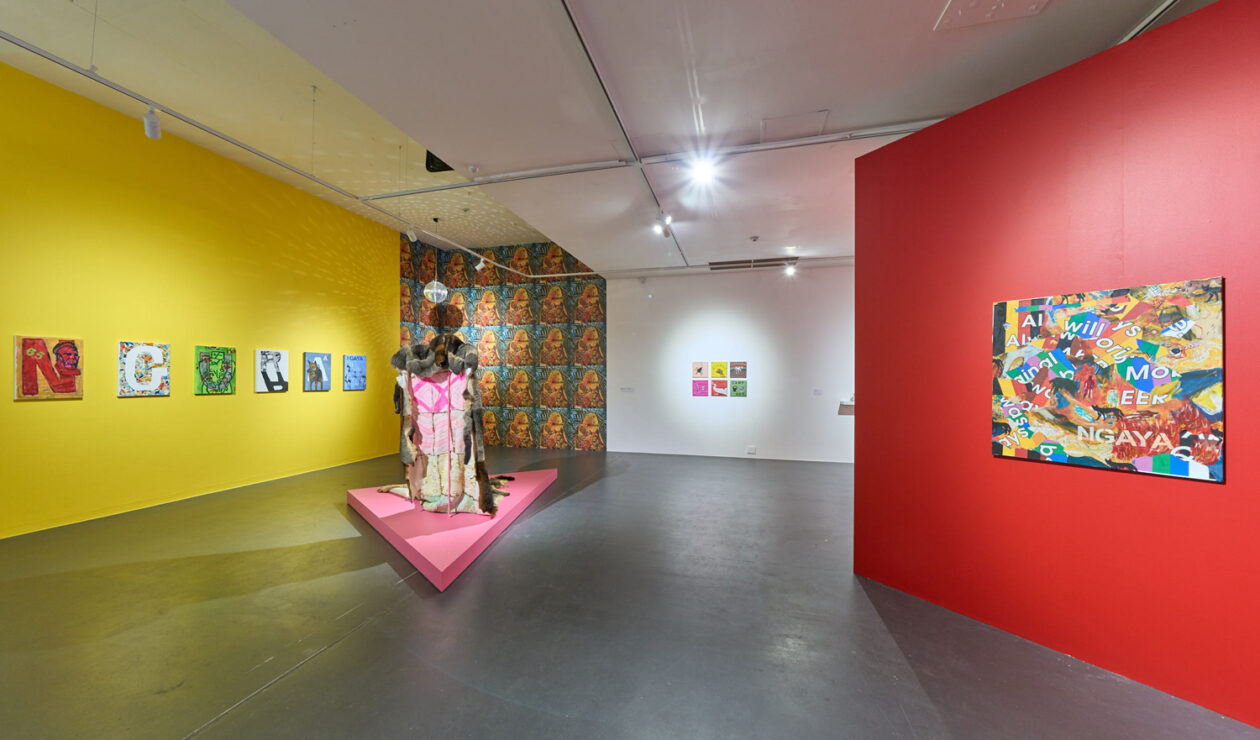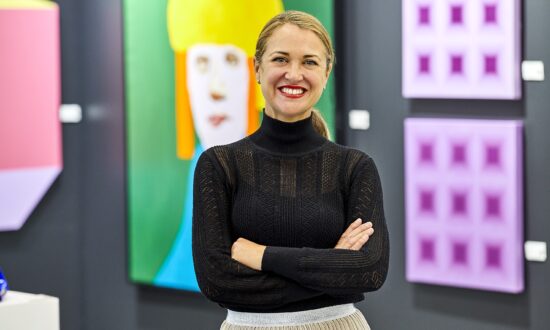Peter Waples-Crowe: PRIDE
Adelaide Contemporary Experimental
In conjunction with Tarnanthi: Festival of Contemporary Aboriginal & Torres Strait Islander Art, Adelaide Contemporary Experimental (ACE) is hosting PRIDE throughout September and October.
Waples-Crowe, a queer Ngarigo multi-disciplinary artist, resides in Naarm/Melbourne. PRIDE is unapologetically Indigenous, queer and anti-colonial. Walpes-Crowe’s lived experiences and professional experiences, as a community health worker within LGBTQIA+ health and activism, clearly influence his art practice.
This exhibition features multi-disciplinary works: film, animation, ceramics, collage, painting, drawing, mixed-media, text, and fibre. Dominic Guerrera, a Kaurna and Ngarrindjeri arts worker and poet, and ACE artistic director Patrice Sharkey have done an excellent job as co-curators.
PRIDE centres Indigenous and queer identities, along with spirituality and place. Within some of the works are imagery of homophobia, colonial violence, ongoing colonisation, and disrespect of Country. Through the potent assertion of pride, these traumatic histories and harmful ideologies are challenged.
Stepping into the gallery, there is an instant burst of mixed palettes – bold primary colours, fluorescent pinks and purples, hues of retro ’60s and earthy tones blend together.

PRIDE installation view featuring Peter Waples-Crowe’s Ngarigo queen – Cloak of queer visibility, Adelaide Contemporary Experimental. Photo: Sam Roberts / supplied
A mirrored disco ball in the corner competes for attention with the possum-skin cloak near the entrance. Slowing revolving around this cloak, like a rotating mirrored ball, is the best way to view it. In making the cloak, titled Ngarigo queen – Cloak of queer visibility (2018), Waples-Crowe sought advice from renowned textile artist Maree Clarke (Mutti Mutti/Yorta Yorta and Boon Wurrung/Wemba Wemba). The addition of contemporary fluorescent pink to a form of clothing that’s been made for eons is eye-catching.
Sound curls around the gallery, inviting further exploration to find the sources. Ngaya (I Am) is a short video created in 2022. It combines animation, sound, recent and archival footage, and an 1863 colonial painting to provide commentary on Country, culture and survival amid ongoing acts of colonisation. This composite of sound and visuals is both humorous and thought-provoking.
Another short film is Budjerri Dyillagamu: Peggeralin (2019), which means welcome to the mountains: dreaming in Ngarigo language. It was made in collaboration with Glynn Urquhart. An animated genderfluid figure walks confidently through a 3D background, which is based on images of the artists’ places of residence and work. As they walk, their face and body constantly changes.
Another piece of note is Savages (2017), which uses digital prints of colonial-era archival images on cotton, to spell out the word savages on seven reclaimed blankets. Burn Faggots (2017), mixed media and collage on board, is a reminder that colonial violence continues, fuelled by religious beliefs of heteronormativity.

Savages (2017) in the Peter Waples-Crowe exhibition PRIDE at Adelaide Contemporary Experimental. Photo: Sam Roberts / supplied
Contained (2020), a series of six acrylic-on-canvas works, features Ngarigo language, dingos and frogs. With animals in yellows and greens on a vivid scarlet background, this is a work of resistance and joy.
Non-human kin, such as the Southern Corroboree Frog and Alpine Dingo, make frequent appearances in Waples-Crowe’s work. This frog and dingo are both under threat due to climate change, having already been heavily impacted by settler-colonialism for many decades. Their presence is a stark reminder that Country, First Peoples and non-human kin are intricately linked, with ongoing colonisation being detrimental to survival. And, as this exhibition highlights, Indigenous queerness is another layer to conversations of First Nations’ rights, resistance and self-determination.

Peter Waples-Crowe, PRIDE (2023), installation view featuring (rear) the video installation Ngaya (I Am), Adelaide Contemporary Experimental. Photo: Sam Roberts / supplied
Waples-Crowe is known for collaborating and mentoring with other creatives. His mentorship with three local emerging Aboriginal artists is reflected in the inclusion of ceramics, illustration and text by Alfred Lowe (Arrernte), Tyberius Larking (Mirning) and Jayda Wilson (Gugada and Wirangu). Their pieces creatively reflect their own pride as Aboriginal queer artists.
There is no separation of queerness from Indigeneity in this exhibition, as pride for LGBTQIA+ First Nations people comes from this place of interconnectedness.
PRIDE is at Adelaide Contemporary Experimental (ACE) until October 28.

Peter Waples-Crowe, PRIDE (2023), installation view including (foreground) a ceramic work by Alfred Lowe, at Adelaide Contemporary Experimental. Photo: Sam Roberts / supplied
Support local arts journalism
Your support will help us continue the important work of InReview in publishing free professional journalism that celebrates, interrogates and amplifies arts and culture in South Australia.
Donate Here




